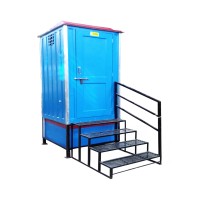Access to clean and hygienic sanitation facilities is a fundamental human right, yet millions of people around the world lack access to proper toilets. In areas without adequate infrastructure, innovative solutions are needed to address this critical issue. One such solution is the portable bio toilet, which offers a sustainable and eco-friendly approach to sanitation. In this article, we will explore what portable bio toilets are, how they work, and their numerous benefits for both individuals and the environment.
What Are Portable Bio Toilets?
Portable bio toilets, also known as biological or bio-digesting toilets, are self-contained sanitation systems designed for use in areas with limited access to traditional sewage or septic systems. These toilets use biological processes to break down human waste, converting it into harmless byproducts, such as water and biogas.
How Do Portable Bio Toilets Work?
The operation of a portable bio toilet typically involves the following key components:
- Collection Tank: This is where human waste is deposited after use. Some models come equipped with a separate urine collection chamber, which can be advantageous for waste separation and nutrient recovery.
- Biological Treatment Chamber: Inside the toilet, there are microorganisms (bacteria) and enzymes that break down the organic matter in the waste. This process is similar to what happens in a septic tank but in a more compact and controlled environment.
- Ventilation System: To facilitate the biological process and reduce odors, many portable bio toilets have ventilation systems that provide aeration and help maintain an optimal environment for the microorganisms.
- Byproduct Disposal: The byproducts of the biological process, including water and biogas, are safely discharged or collected for reuse. Some systems even generate usable biogas for cooking or heating.
Benefits of Portable Bio Toilets
- Sustainable Sanitation: Portable bio toilets provide a sustainable solution to sanitation challenges. They reduce the need for pit latrines or open defecation, which can contaminate groundwater and soil.
- Water Conservation: These toilets use little to no water for flushing, making them an excellent choice in regions facing water scarcity.
- Odor Control: The ventilation systems in portable bio toilets help control odors, ensuring a more pleasant user experience.
- Nutrient Recovery: Some models allow for the separation and recovery of valuable nutrients from human waste, which can be used for agricultural purposes.
- Reduced Environmental Impact: Portable bio toilets minimize pollution and reduce the release of harmful pathogens into the environment, contributing to cleaner and healthier surroundings.
- Versatile and Mobile: They are easy to transport and set up, making them suitable for disaster relief efforts, construction sites, and outdoor events.
- Cost-Effective: Over time, portable bio toilets can prove to be a cost-effective sanitation solution, especially when compared to the construction and maintenance of traditional sewage systems.
Conclusion
Portable bio toilets offer a practical and eco-friendly solution to the global sanitation challenge. They provide a sustainable way to ensure access to safe and hygienic toilets in areas with limited infrastructure. As technology advances and awareness of environmental issues grows, portable bio toilets are becoming an increasingly vital tool in addressing sanitation disparities and promoting a healthier and more sustainable world. Whether used in disaster-stricken regions or at outdoor events, these innovative toilets are a step toward ensuring that sanitation is a right accessible to all.

